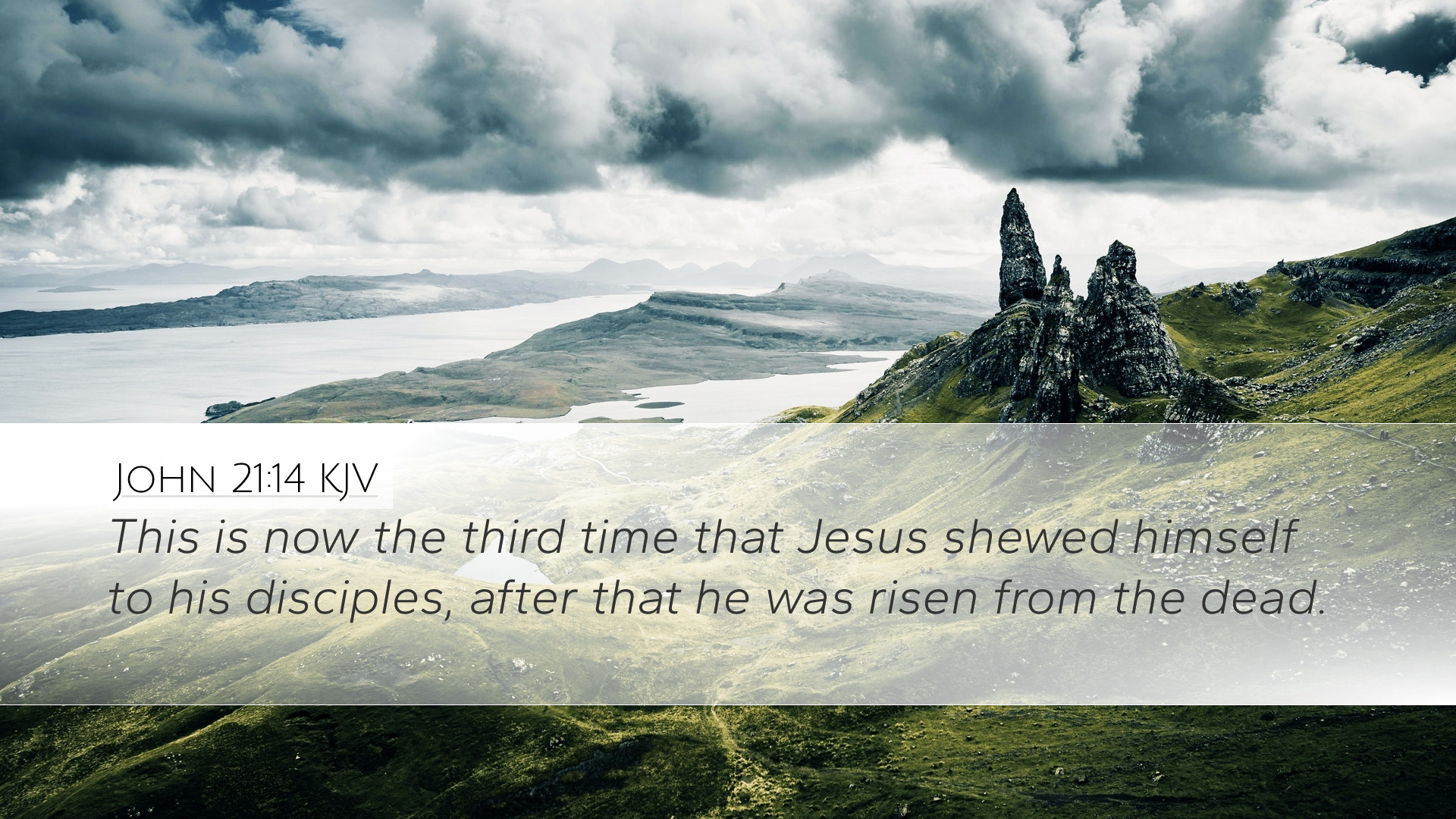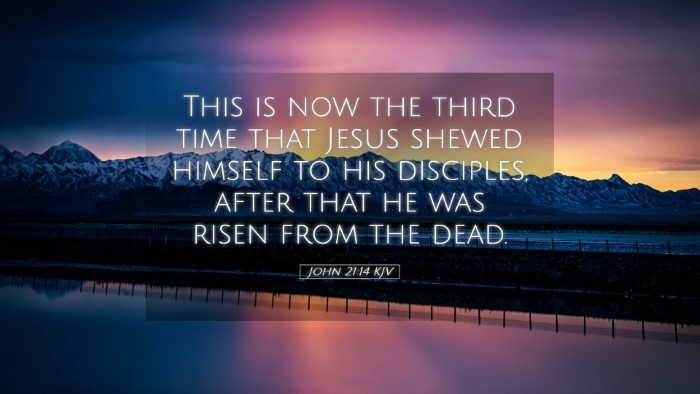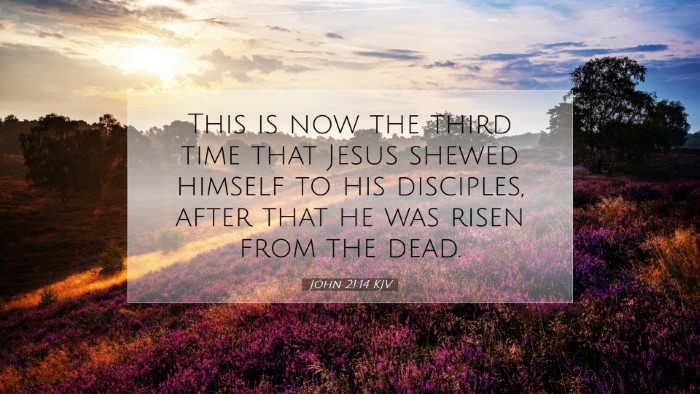Old Testament
Genesis Exodus Leviticus Numbers Deuteronomy Joshua Judges Ruth 1 Samuel 2 Samuel 1 Kings 2 Kings 1 Chronicles 2 Chronicles Ezra Nehemiah Esther Job Psalms Proverbs Ecclesiastes Song of Solomon Isaiah Jeremiah Lamentations Ezekiel Daniel Hosea Joel Amos Obadiah Jonah Micah Nahum Habakkuk Zephaniah Haggai Zechariah MalachiJohn 21:14
John 21:14 KJV
This is now the third time that Jesus shewed himself to his disciples, after that he was risen from the dead.
John 21:14 Bible Commentary
Commentary on John 21:14
John 21:14 states, "This is now the third time that Jesus showed himself to his disciples, after that he was risen from the dead." This verse comes at a pivotal moment in the resurrection narrative, indicating a significant culmination of Christ’s post-resurrection appearances, and holds deep theological implications for the disciples and the early Church.
Introduction
The context of this verse is critical, as it reflects a reunion of the disciples with Jesus after His death and resurrection. By identifying this appearance as the third, the evangelist underscores the importance of the resurrected Christ in the life of His followers. Each appearance serves to reinforce faith, dispel doubts, and equip the disciples for their future ministry.
Historical Context
Matthew Henry emphasizes the significance of understanding the timing of Jesus' appearances. Following His resurrection, Jesus chose to reveal Himself multiple times to His disciples, a fact that highlights His desire for relationship and affirmation in moments of confusion and uncertainty.
- First Appearance: Mary Magdalene at the tomb.
- Second Appearance: To the disciples without Thomas.
- Third Appearance: Here in John 21:14 to the disciples who had returned to fishing.
Theological Implications
Albert Barnes elaborates on the theological significance of the number three in the Bible, often symbolizing completeness or confirmation. Therefore, this third appearance emphasizes the reality of Jesus' resurrection and the importance of His ongoing presence with His followers, preparing them for the mission ahead.
Moreover, Adam Clarke notes that this verse signifies more than just a physical appearance; it is a reaffirmation of the disciples' calling and purpose after an extended period of doubt and returning to old ways of life. This resurrection narrative challenges them to recognize their transformation in light of Christ’s victory over death.
Jesus' Intentions
In analyzing this passage, the commentator must recognize Jesus's deliberate choice to appear amidst the familiar setting of fishing. Matthew Henry comments on the condescending nature of Christ's love—He meets the disciples in a familiar environment, highlighting His intimate understanding of their needs, both spiritually and physically.
Moreover, the transition from their former life of fishing back into discipleship serves as a profound analogy for believers today. Jesus meets us in our everyday routines and calls us to something greater, a reminder that our mundane moments can be sanctified by His presence.
Connection to the Call of the Disciples
Furthermore, John 21:14 serves as a pivotal connection back to the initial call of the disciples in Luke 5:10-11. Clarke draws parallels between their old life as fishermen and their new commission as "fishers of men." Christ’s resurrection is what empowers this transformation and reaffirms their identity in Him.
Pastoral Insights
For pastors and church leaders, this passage offers rich material for preaching on the themes of hope, renewal, and divine calling. The resurrection is central to the Christian faith and proclaims that despite our failures and doubts, we are called back to serve Christ actively. The repeated appearances of Jesus demonstrate God’s persistent grace, encouraging the faithful to recognize and respond to His presence in their lives.
Conclusion
In conclusion, John 21:14 encapsulates a significant moment in the resurrection narrative, carrying profound implications for the disciples and for Christians today. The presence of the risen Christ reflects the reality of God’s redemptive work and invites believers into a transformative relationship. The commentaries of Henry, Barnes, and Clarke highlight the importance of this passage as a source of reassurance, identity, and purpose for all who follow Christ.
As we contemplate this verse, may we respond to Christ's call to embrace our identity within His resurrection, and may we, like the disciples, be emboldened to live out our faith with passion and conviction.


